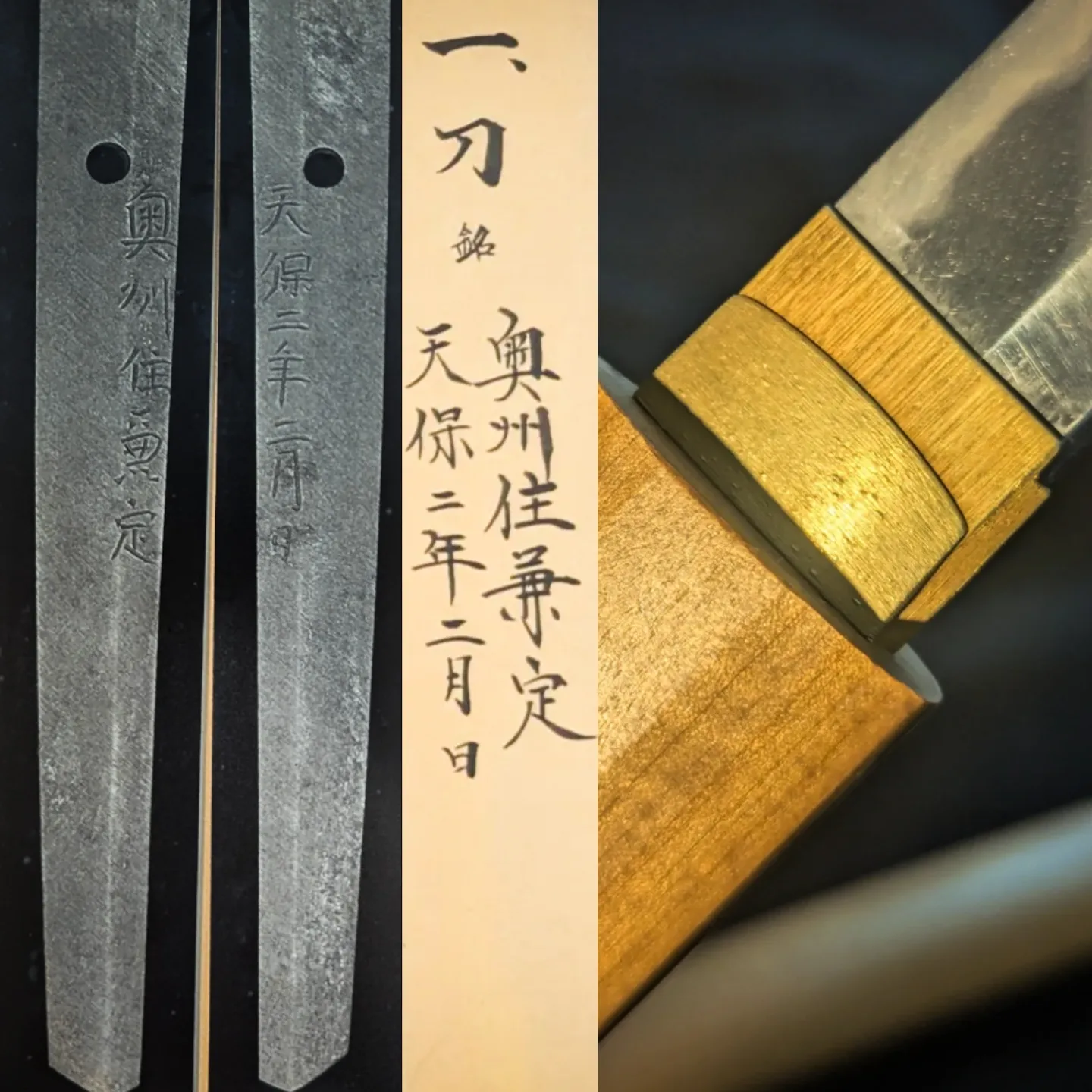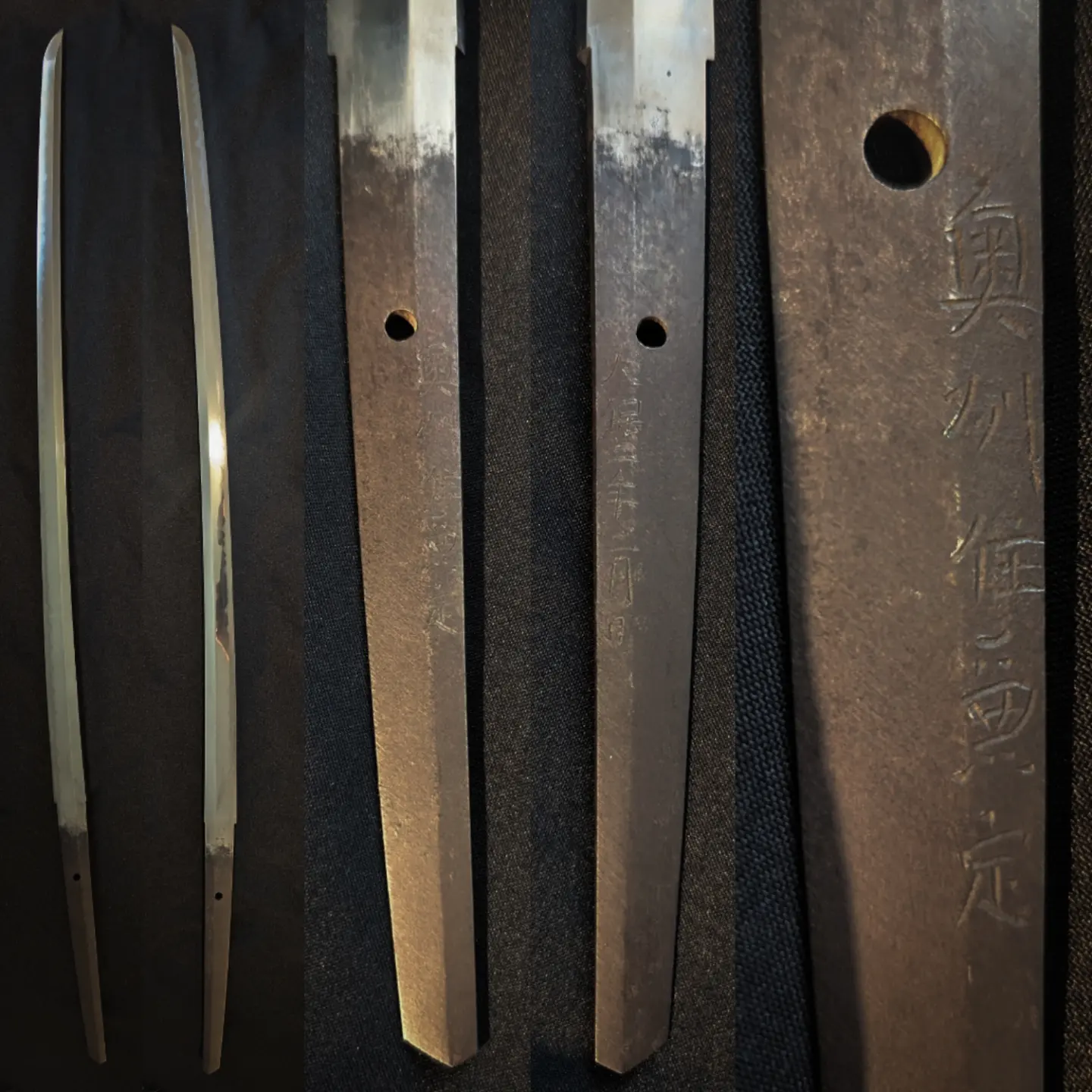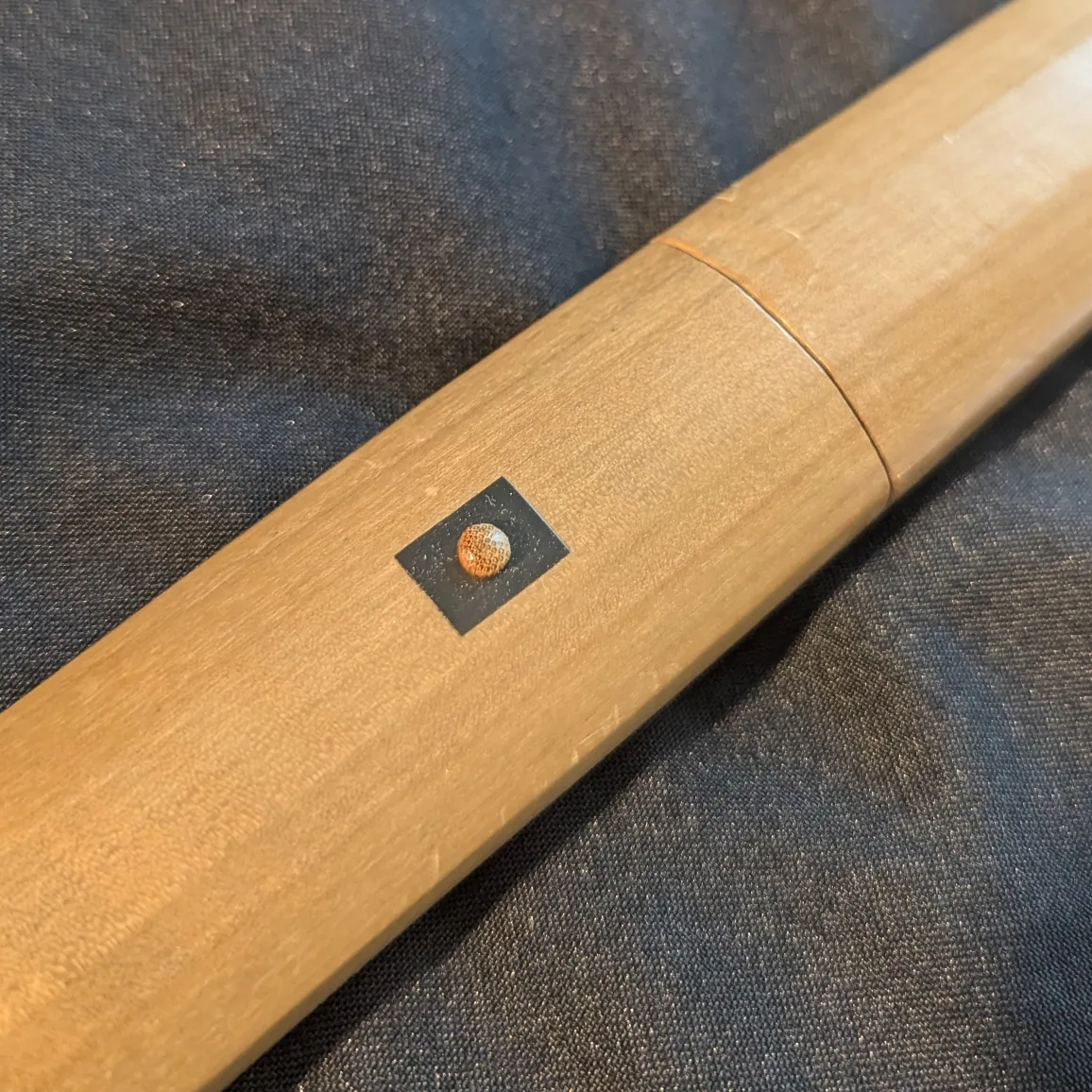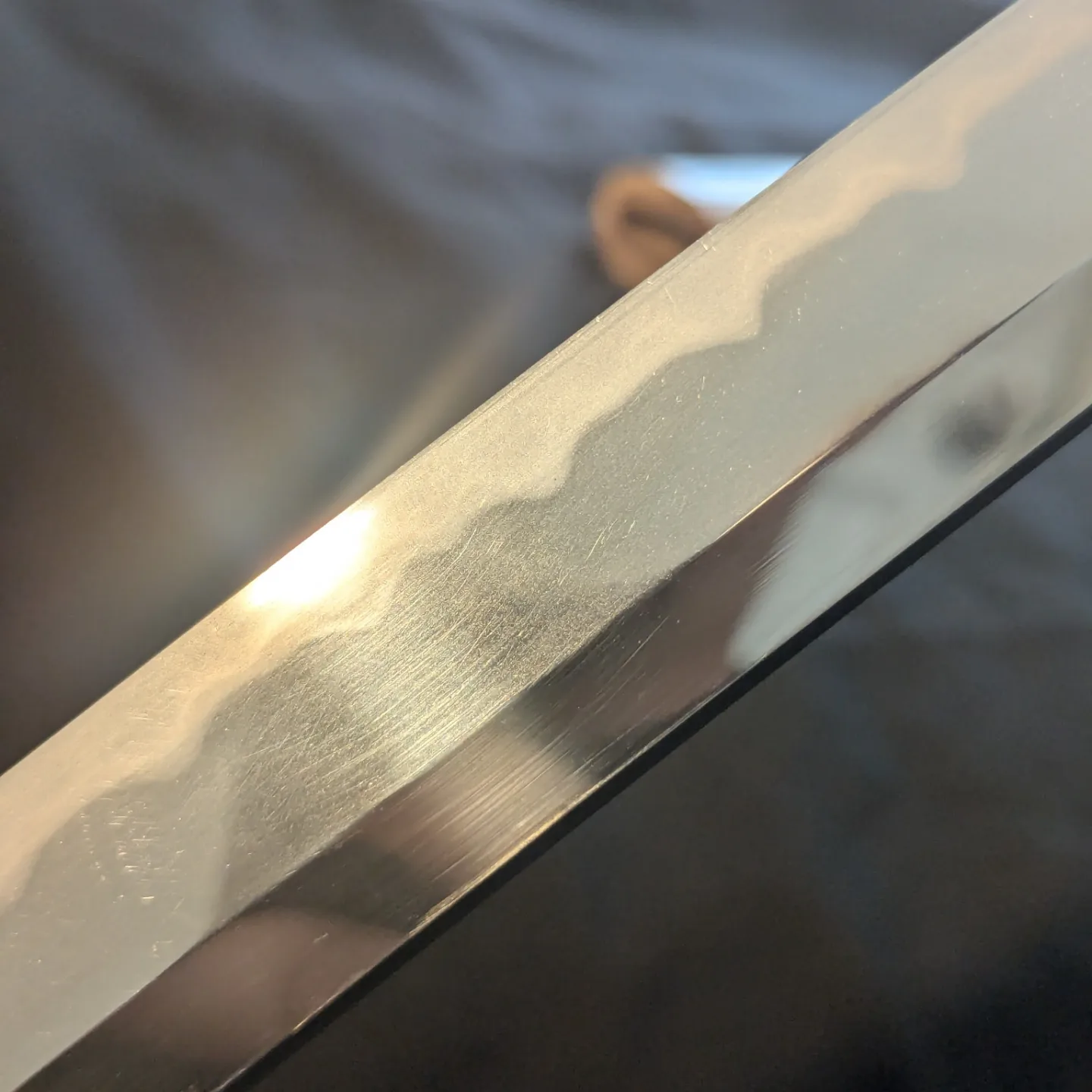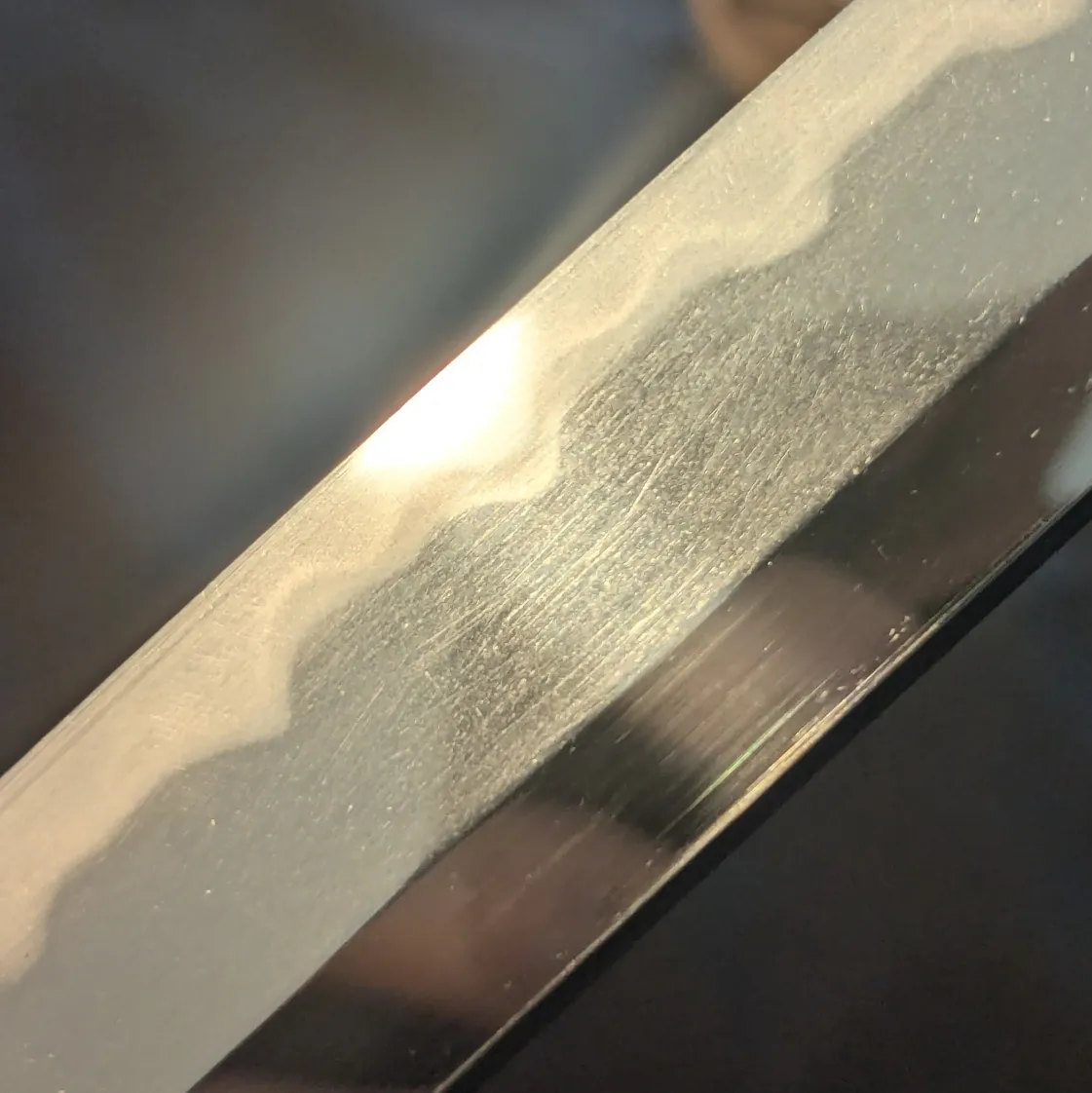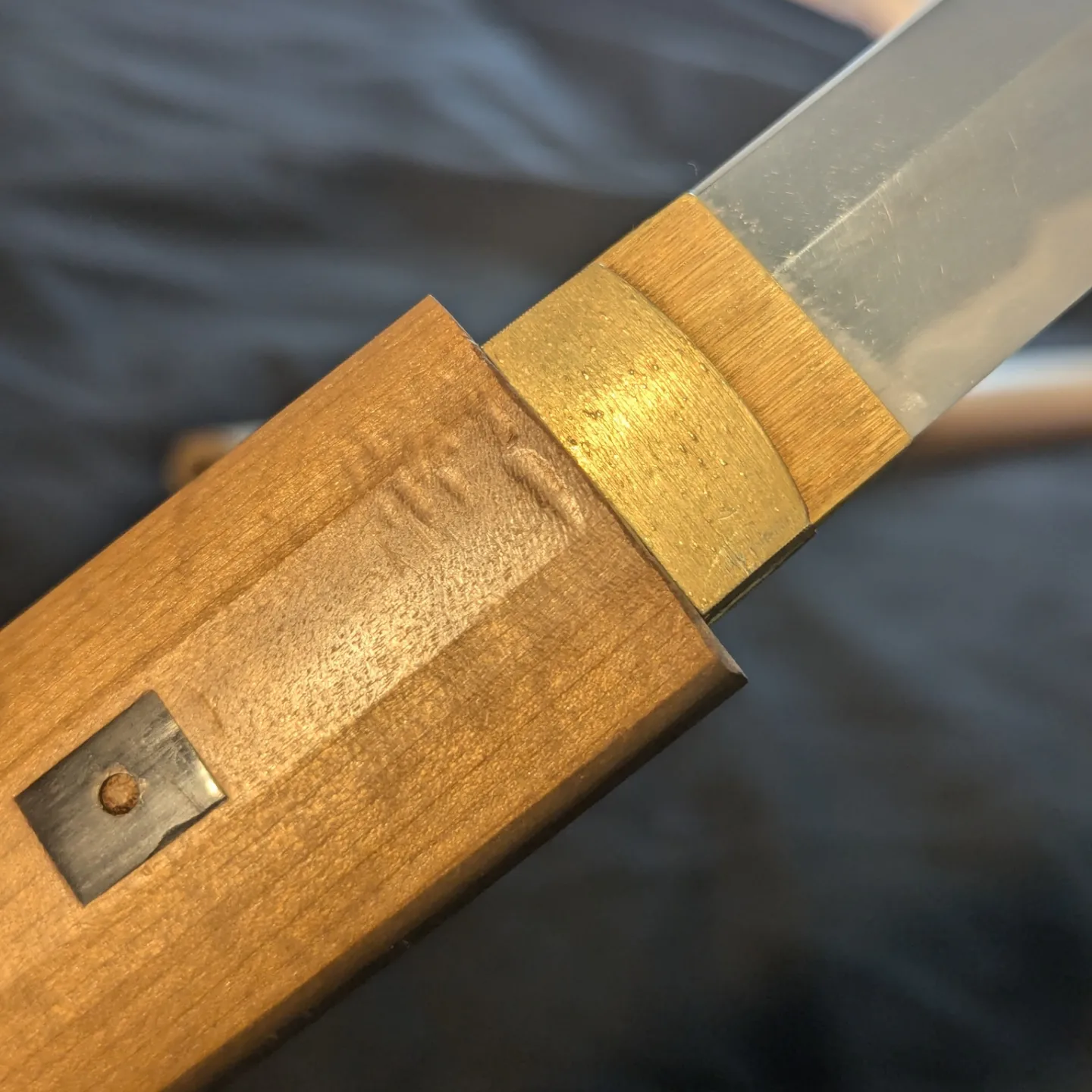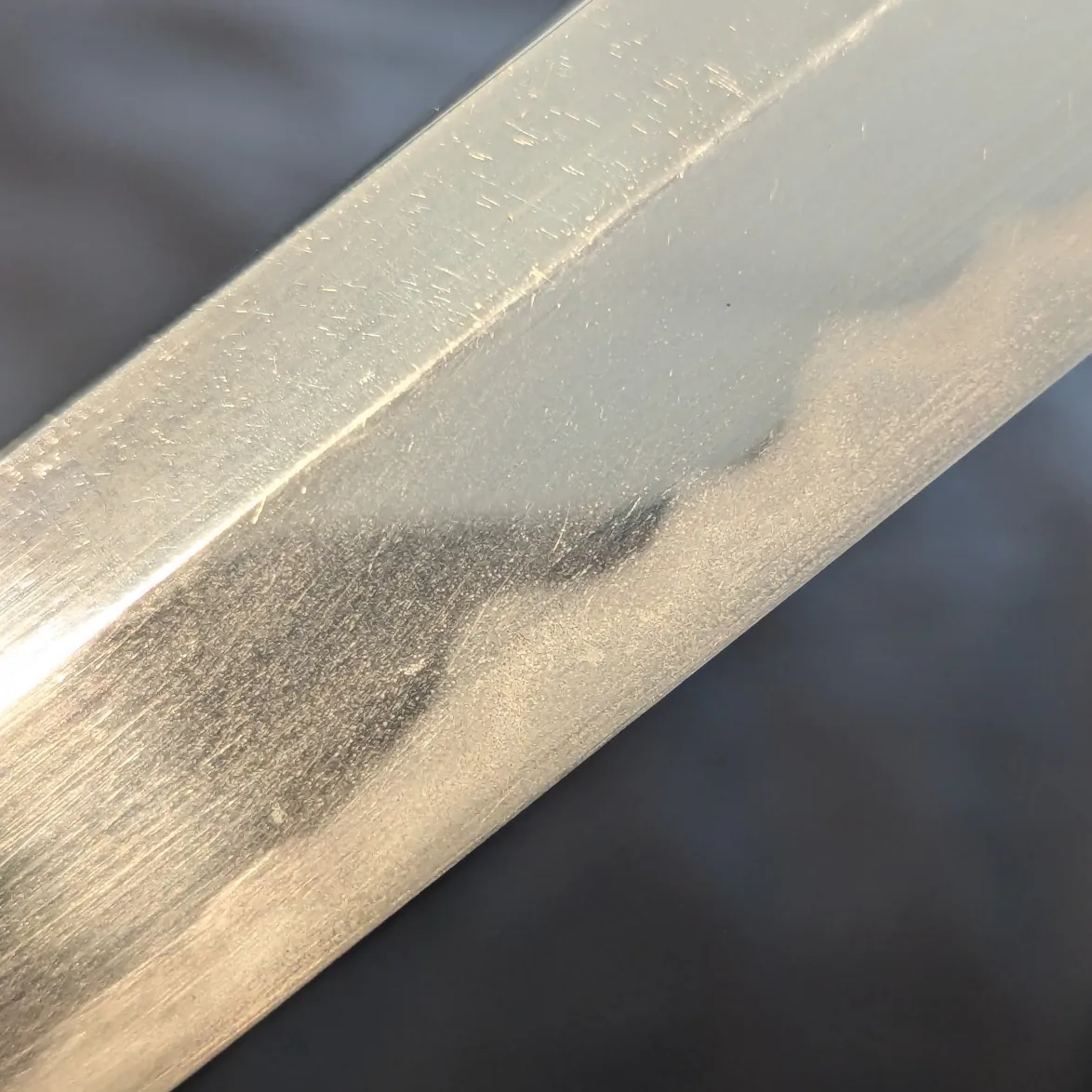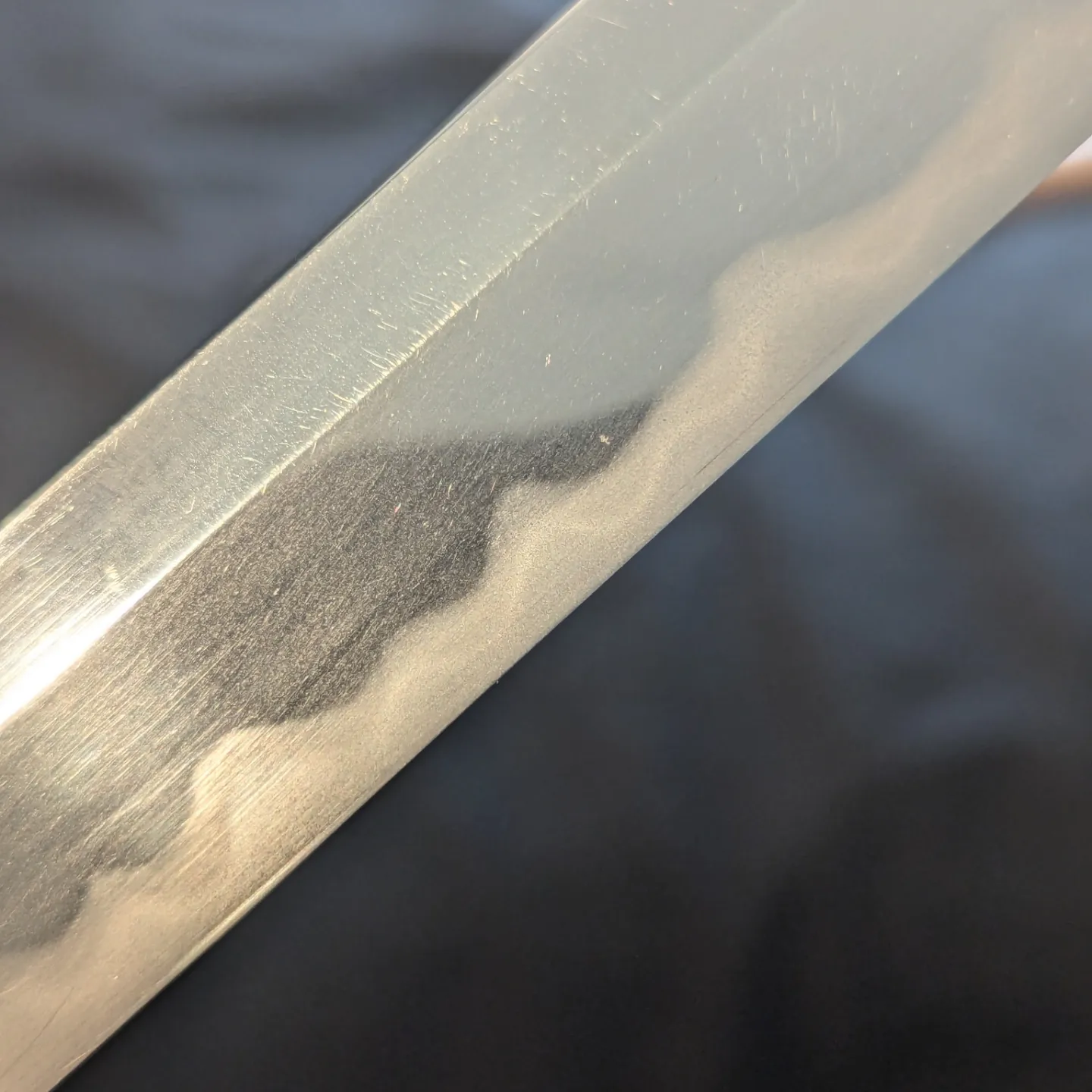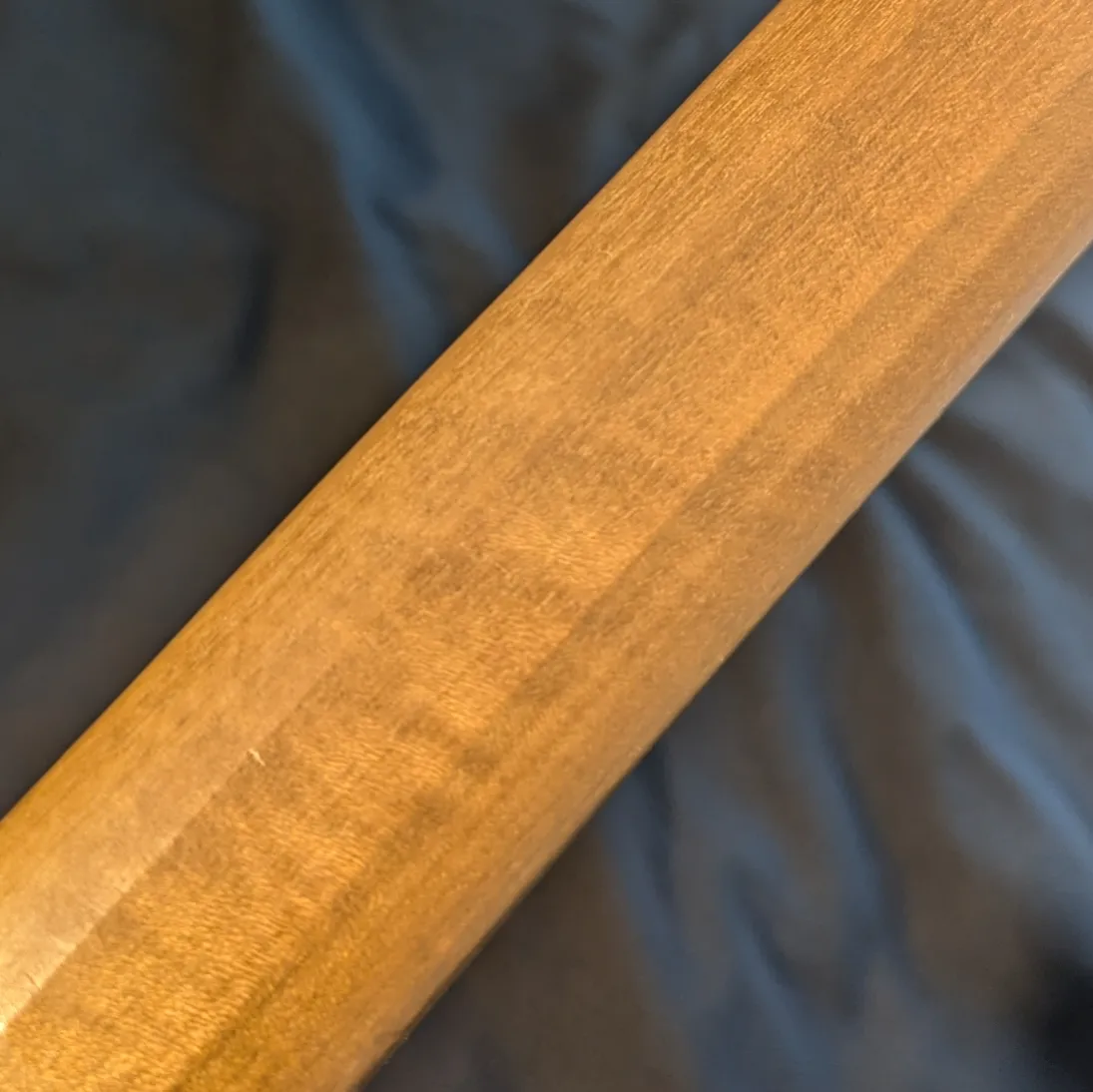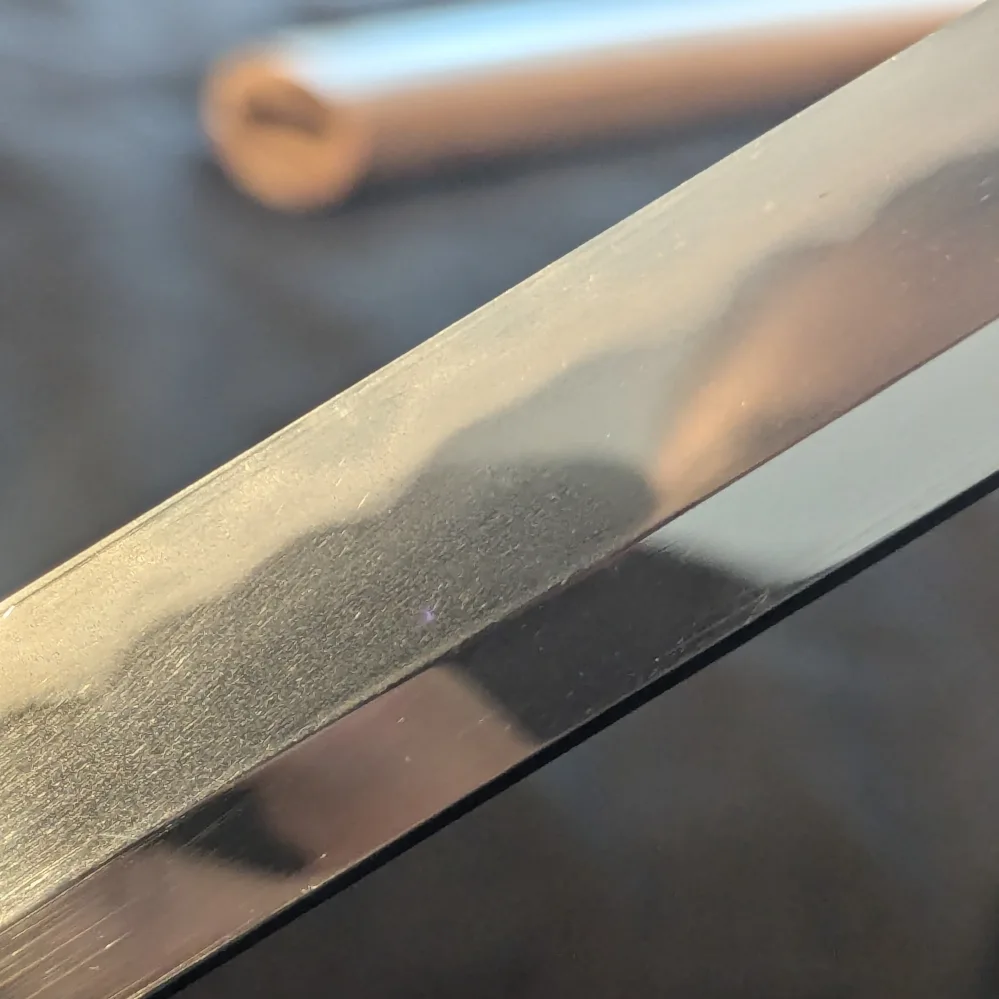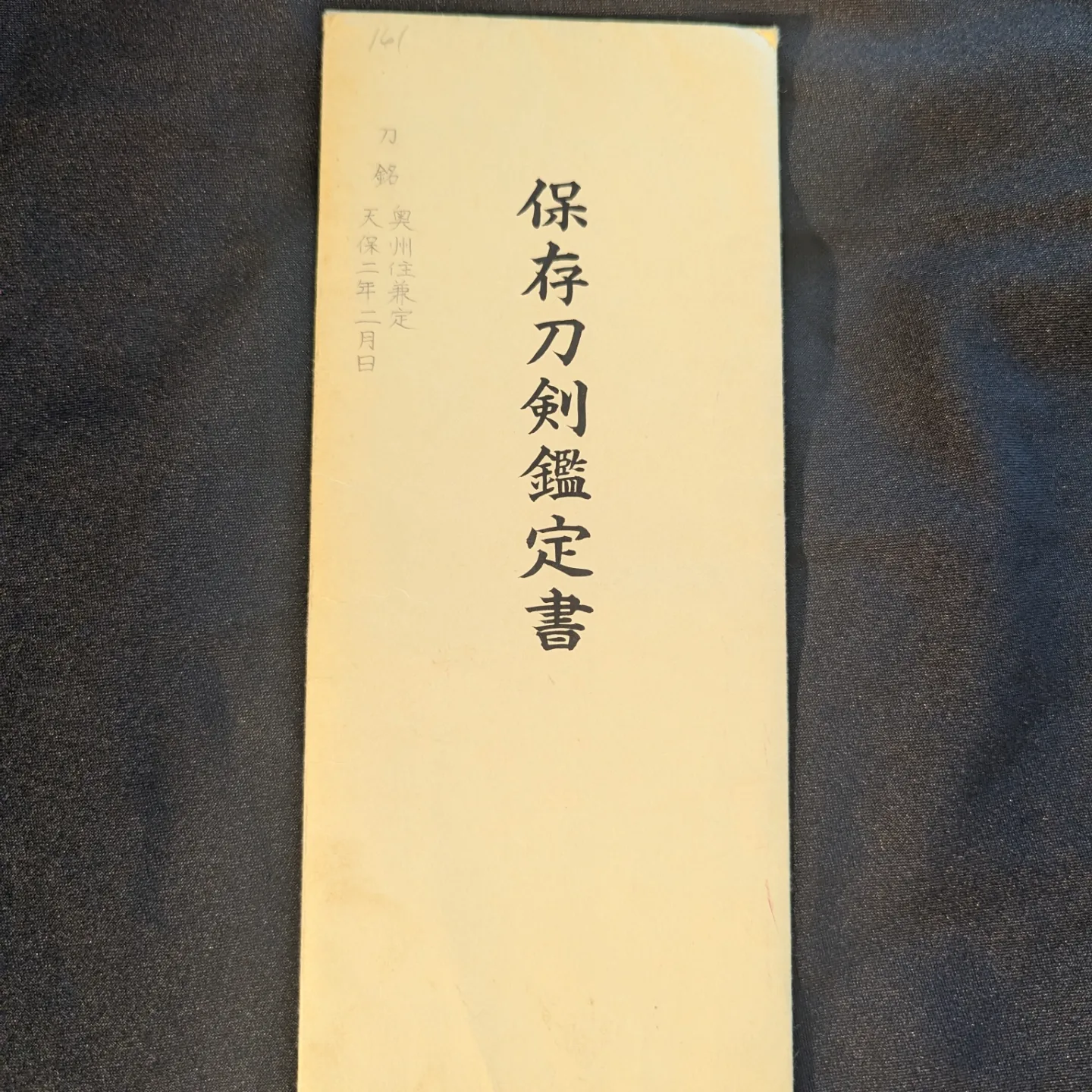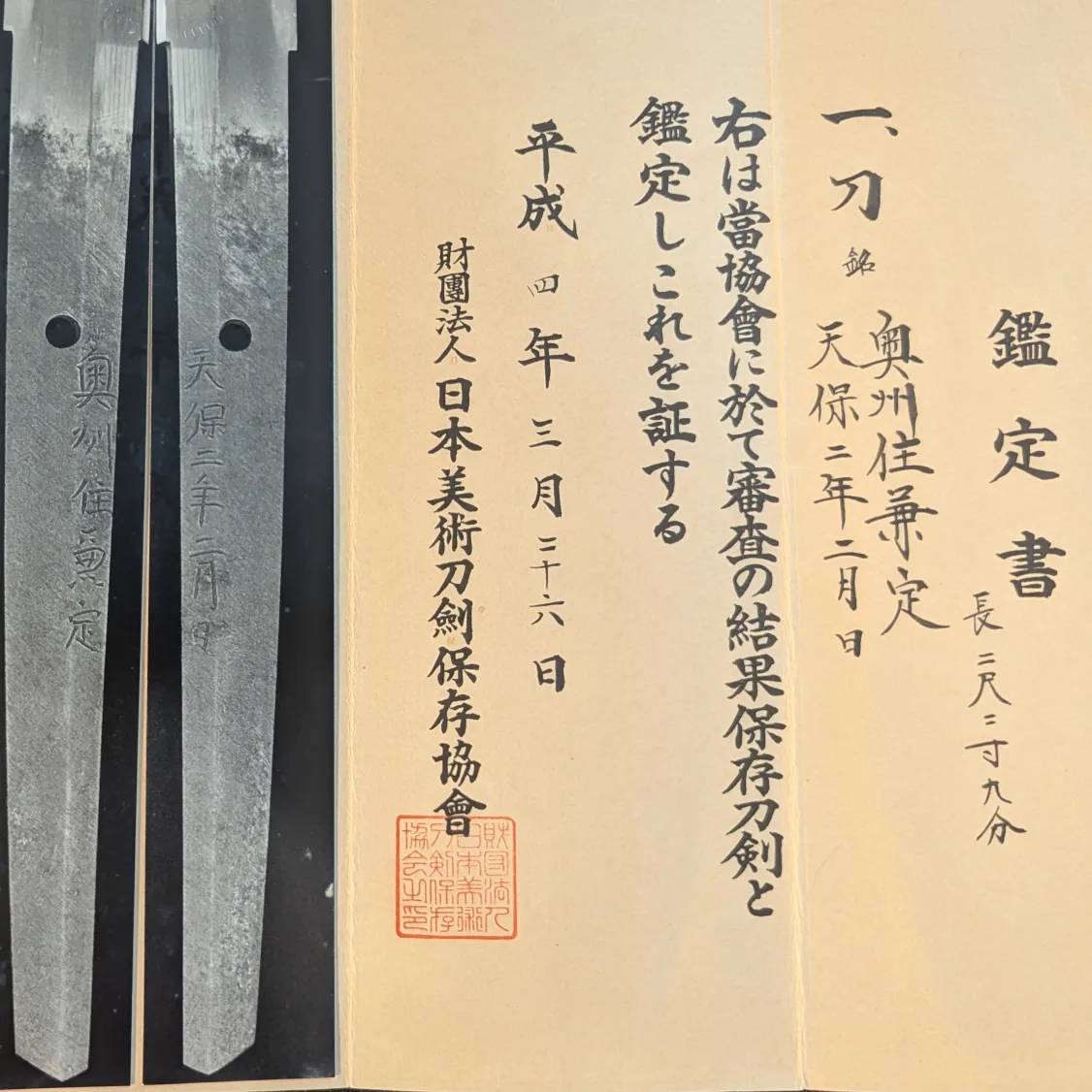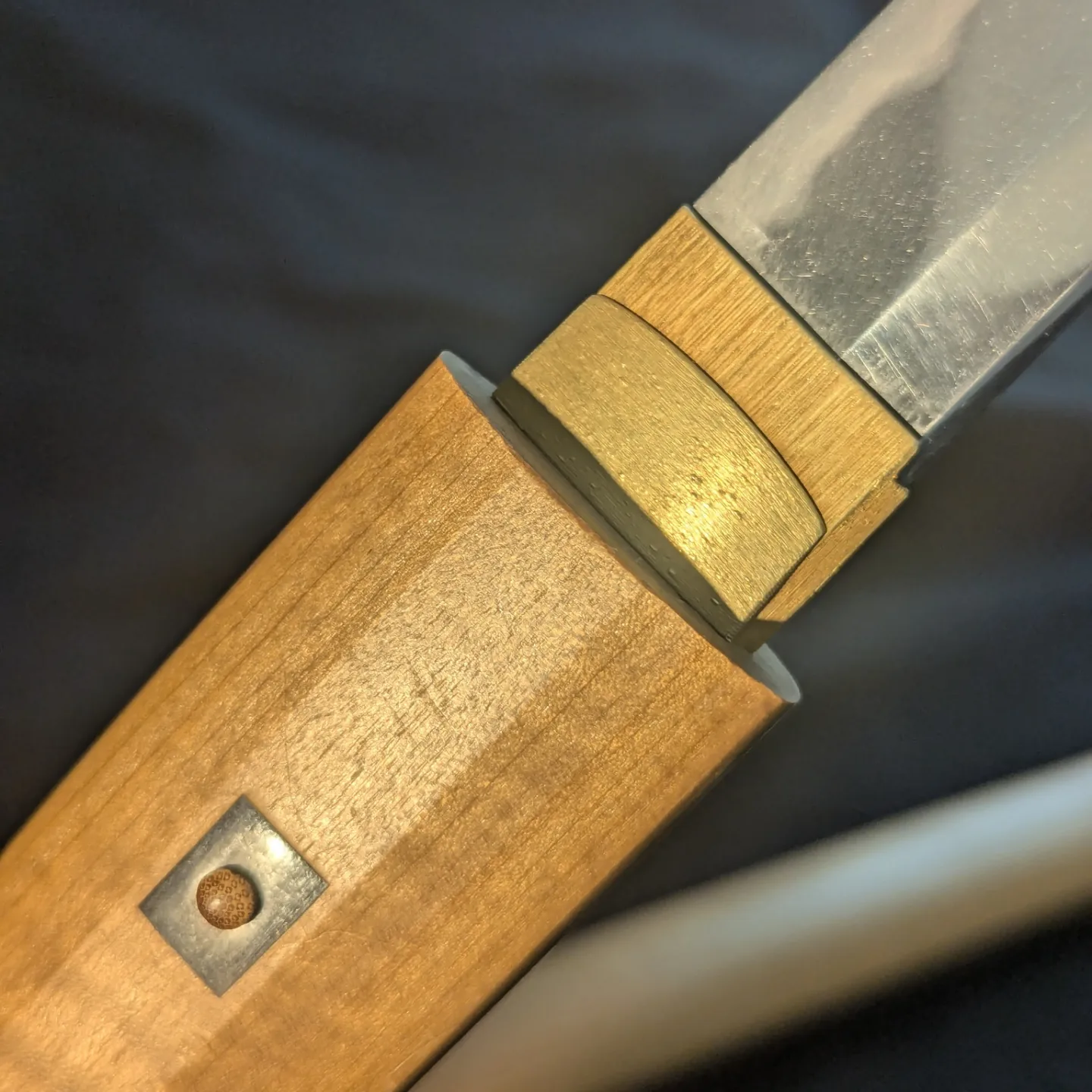KANESADA(兼定), 10th gen., Tenpo (天保,1830-1844), Oshū – “Oshü-jü Kanesada”(奥州住兼定),“Aizu-jū Kanesada”(会津住兼定),“Mutsu Aizu-jū Kanesada”(陸奥会津住兼定),“Öshū Aiyō-jū Kanesada”(奥州会陽兼定), “Mutsu Aifu-shin Kanesada”(陸奥会府臣兼定,“Kanesada, retainer of Mutsu’s Aizu fief”), real name Fujiwara Omi (古川近江), he initially bore the first name Gyōzō (業蔵), he changed his name from Kanesada to Kaneuji (兼氏) when his successor received the honorary title Izumi no Kami, it is said that he had also studied under the 4th generation Aizu Kanetomo (兼友) in his younger years, he was employed by the fief in Tenpō six (天保,1835), i.e. two years after his father’s death, receiving the rank of a Kõga and a stipend for the support of six persons, in Tenpo twelve (1841), his zeal and diligence in service earned him the samurai rank of Kaisho-jiban (会所次番), and due to his continuous efforts, he was granted the rank of Dokurei (独礼) in Ansei five (安政, 1858), we know some joint works with Miyoshi Nagamichi (三善長道), he died on the 17th day of the ninth month Meiji two (明治,1869), shinogi-zukuri, iori-mune, thick kasane, high shinogi, shallow sori, little tapering, altogether a grand and magnificent sugata, he made mostly katana and wakizashi but there are also tanto extant, itame mixed with ko-mokume, sometimes also mixed with masame, the steel is very tightly forged and bright, suguba or ko-gunome in ko-nie-deki mixed with choji, there are asbi and sunagashi and the niviguchi is mostly wide, the bashi shows a long ko-maru or o-maru-kaeri and occasionally also yaki-kuzure, the tang is long and shows kiri or katte-sugari yasurime and a ha-agari kengyo-jiri, the mei is applied with a thick chisel and in a large manner

